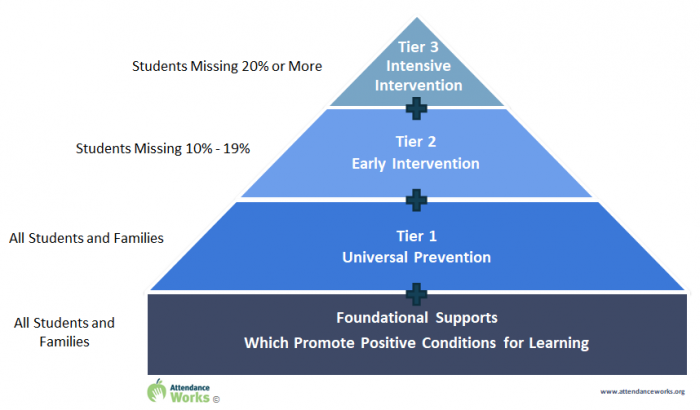3 Tiers of Intervention
Attendance Works recommends a tiered approach that starts with foundational supports for the whole school. These foundational supports are followed by prevention-oriented supports for attendance (Tier1), more personalized outreach or early intervention (Tier 2), and intensive intervention (Tier 3).
The Tiers of Intervention

Learn more about positive conditions for learning in the blog post Student and Adult Well-Being Are Key to Positive Conditions for Learning.
Examples of Tiered Practices
Fill in your own 3 Tiers worksheet
Download a sample worksheet with examples
What Activates Support at Each Tier?
Don't wait until Tier 3!
